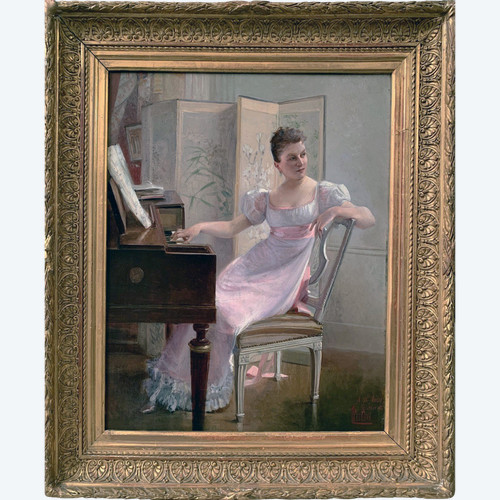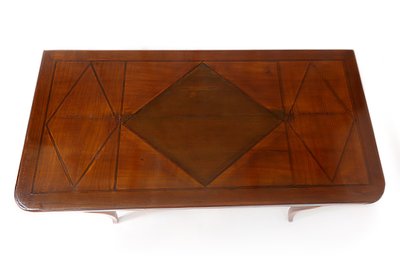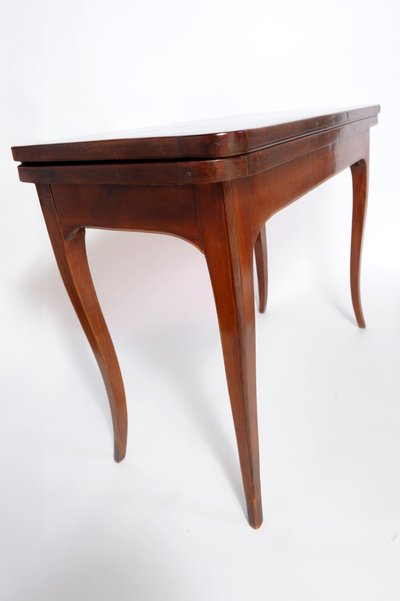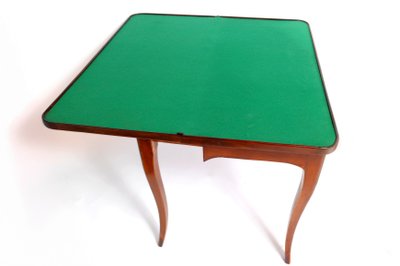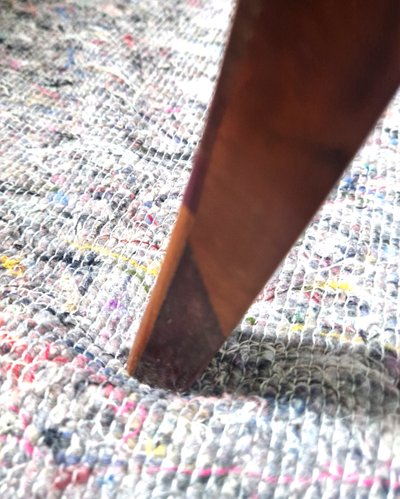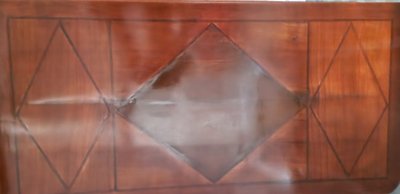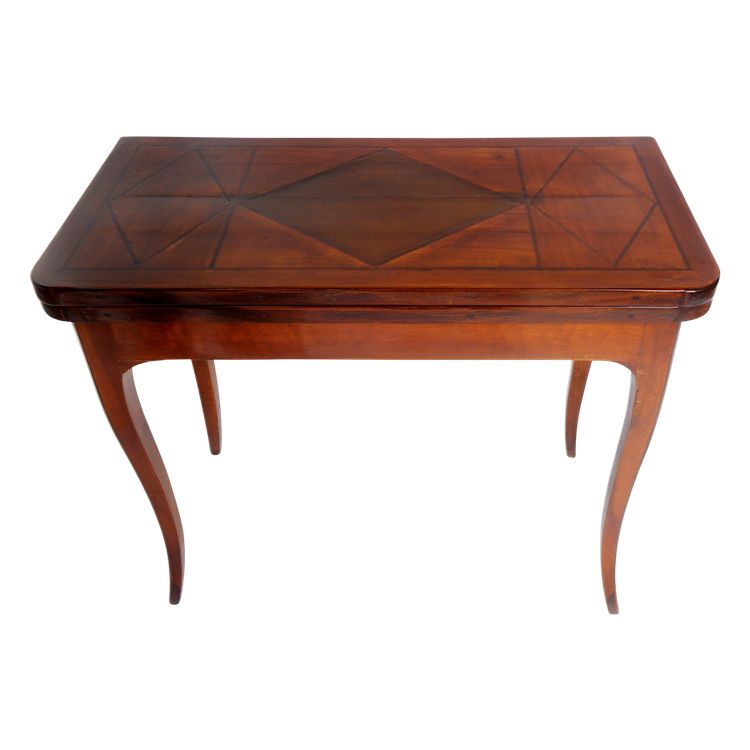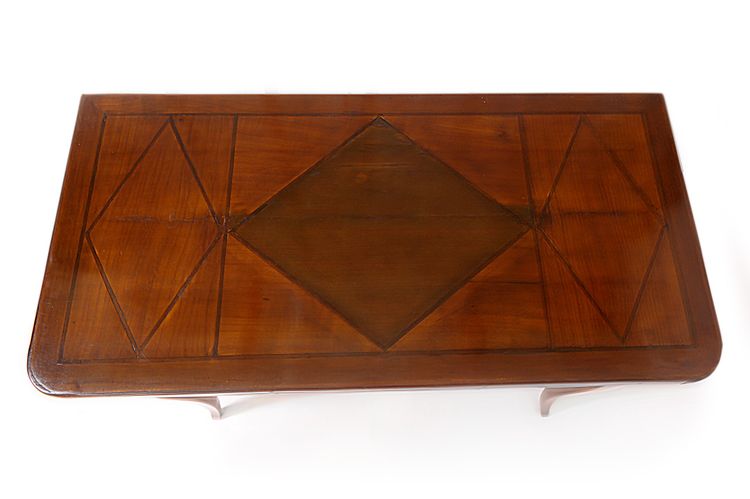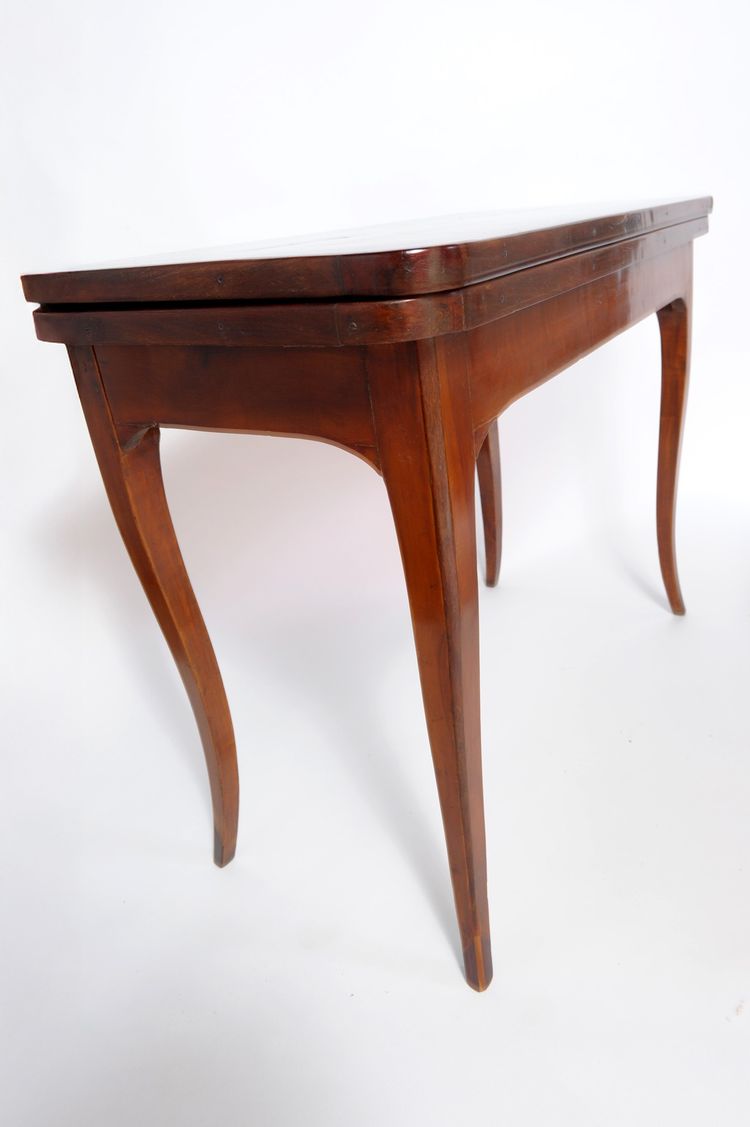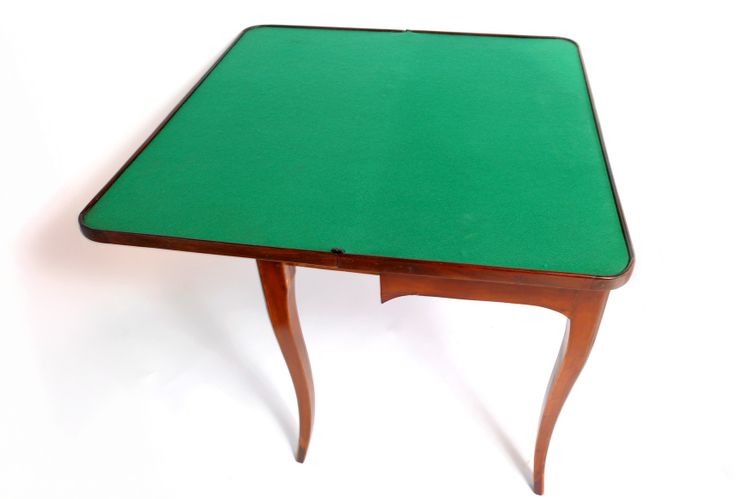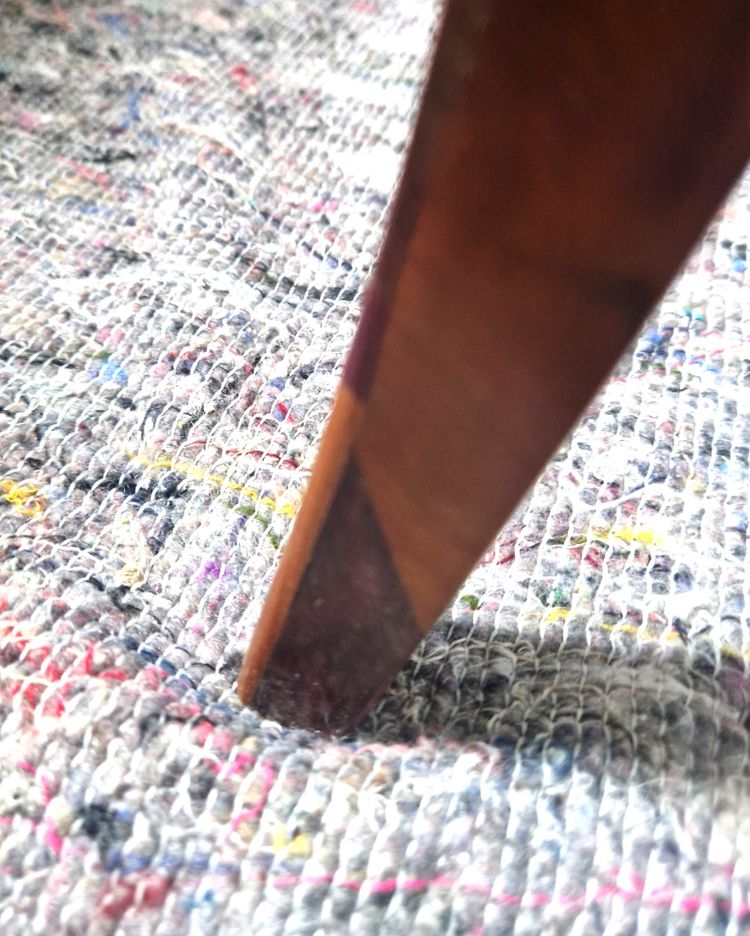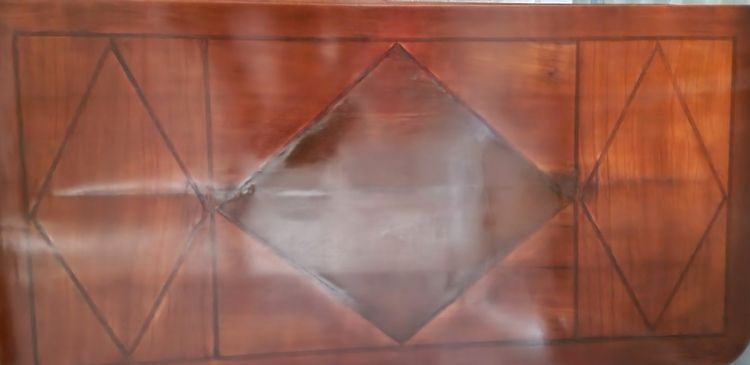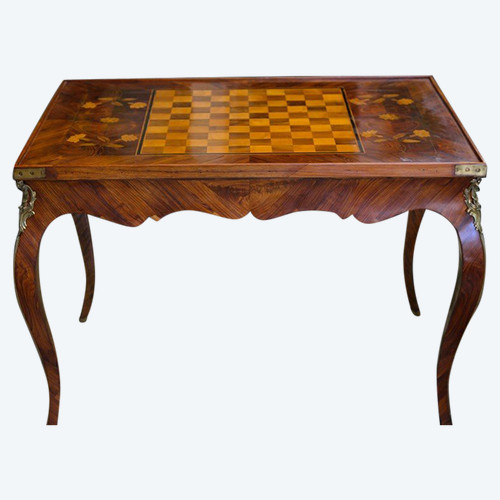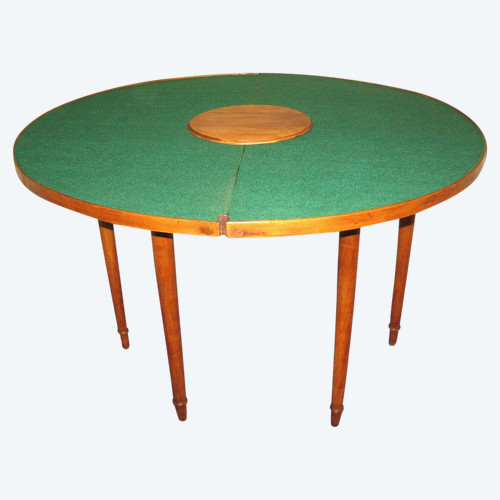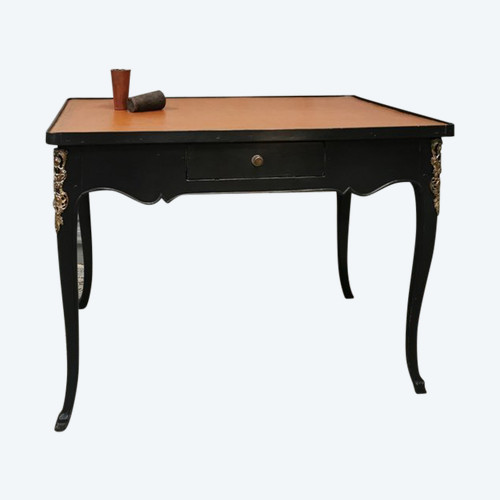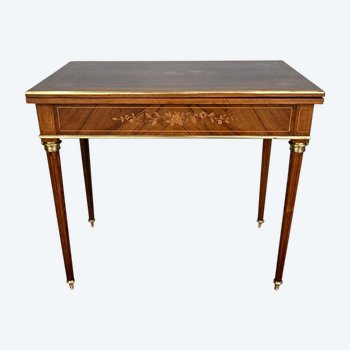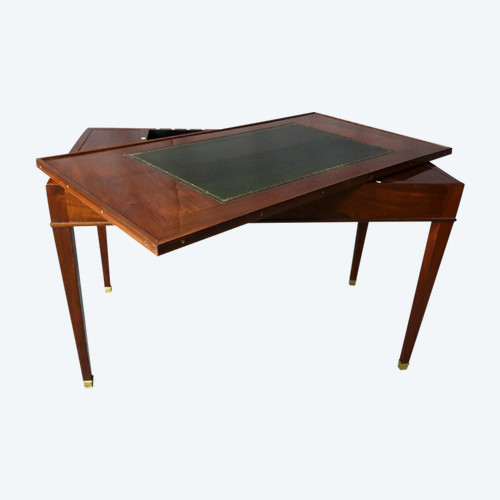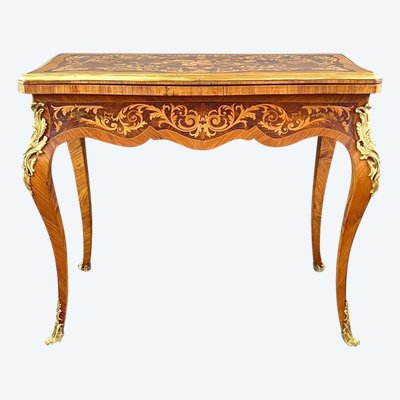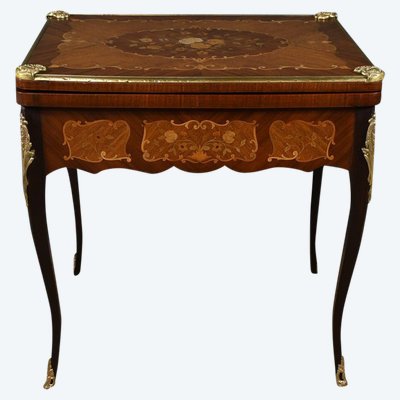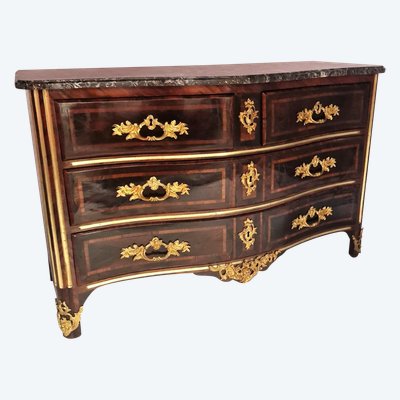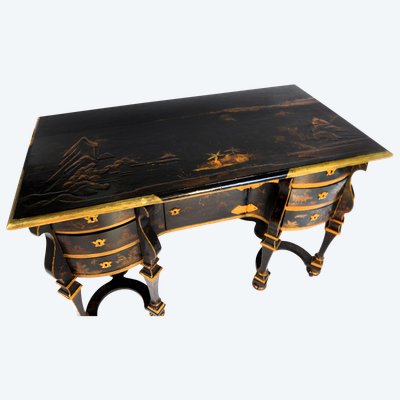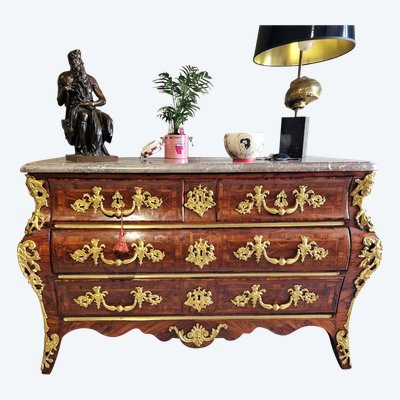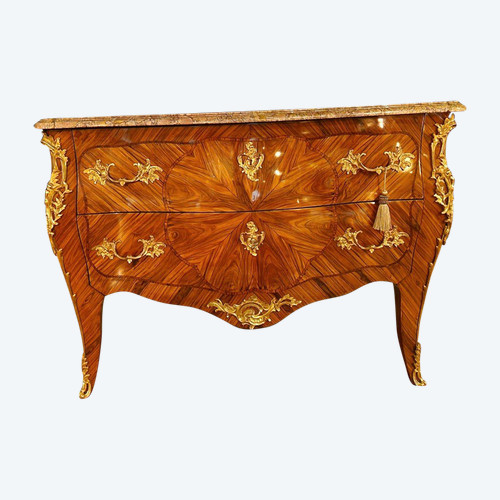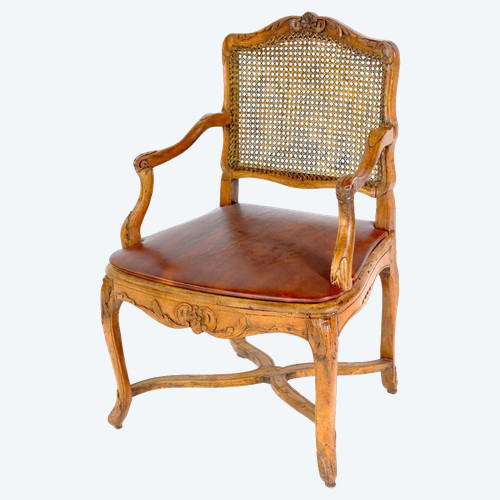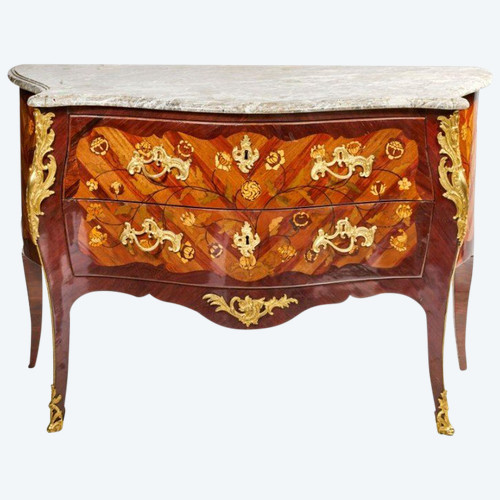This description has been translated and may not be completely accurate. Click here to see the original
Cherry wood and amaranth stringing game table.
The tilting top has a diamond pattern, resting on arched legs.
The latter are decorated with amaranth stringing and clogs.
Marked by Gilles Joubert.
Louis XV period
H: 74 cm, W: 89 cm, D: 44 cm
He notably delivered a very similar table, albeit slightly smaller, for the Petit Trianon at Versailles in 1768.
Gilles Joubert (1689-1775), cabinetmaker. Paris.
Joubert's brilliant career followed that of Oeben and preceded Riesener in the very important position of cabinetmaker to the King.
The exact date of his mastery is unknown, probably occurring between 1715 and 1720, during the height of the Regency period. It is quite possible that the cabinetmaker Pierre Migeon, his wife's cousin and highly esteemed by Madame de Pompadour, recommended him to the King, for whom he began working in 1748. He became Ordinary Cabinetmaker to the Garde-meuble de la Couronne ten years later, succeeding Jean François Oeben, and remained in this position from 1763 to 1774.
He was later replaced in this role by Riesener.
At first occasional, commissions from the Crown became increasingly numerous, and Joubert's reputation grew daily. In 1755, he was chosen to create two sumptuous corner cabinets to accompany the magnificent medallion that Antoine Goudraux delivered to the King's cabinet at Versailles in 1739.
He made special tables for playing quadrille, piquet, comète, brelan, and hombre. These pieces are thus described in the Garde-Meuble Journal.
From 1758, the master became "ordinary cabinetmaker of the Garde-meuble de la Couronne," for which he had until then only been an occasional supplier. At the beginning of 1763, Gilles Joubert obtained the title of Cabinetmaker to the King, to which he was soon able to add that of dean of his guild. As orders for the Royal Houses continued to flow, Joubert was then forced to subcontract.
This is why, according to the Garde-Meuble Journal, many of the works delivered by him do not bear his stamp but those of his colleagues who worked under his direction.
Joubert is a pure representative of the Louis XV style, but he knows how to evolve with the times. We find Transition style pieces with neoclassical decorations. However, he found it more difficult to express himself in the Louis XVI style. Joubert signed only a tiny fraction of his works. Since the use of the stamp was not yet mandatory for most of his professional life, and since he was exempted from it later, as cabinetmaker to the King, it is very difficult to reconstruct Joubert's fruitful and brilliant career.
Only the journal of the Garde-Meuble, preserved in the National Archives, allows us to understand the extent of his work. He was already at an advanced age when the use of stamps became widespread in his community, and he showed little enthusiasm for complying with the rules that made them mandatory.
He retired from business at the age of 85, shortly before his death in 1775.
MUSEUMS:
Corner Cabinets, Commode - Palace of Versailles
Commode - J. Paul Getty Museum
Ref: 12BZ3MBD88
 Gold, Silver and Diamond "Turtle" Brooch
1.900 € EUR
Gold, Silver and Diamond "Turtle" Brooch
1.900 € EUR




